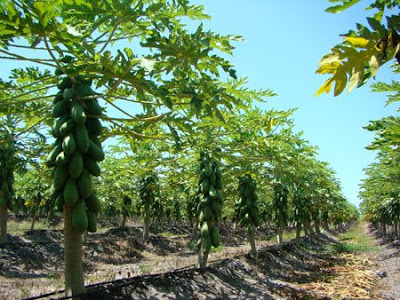Florida avocado volumes likely down a bit
 Excerpt from an article in 6/2/08 The Packer
Excerpt from an article in 6/2/08 The Packer
The state’s pickings normally start by the end of May and increase in mid-June with promotable volume hitting during July and August. The deal normally ends in January with lighter volumes in February.
Florida is expected to ship 900,000 to 950,000 bushels during the 2008-09 season, said Alan Flinn, administrator of the Homestead-based Florida Avocado Administrative Committee, which oversees the federal Florida avocado marketing order. That’s slightly less than last year’s 1.2 million bushels.
“We think it is a healthy crop,” said Bill Brindle, vice president of sales management for Brooks Tropicals Inc. “It should be almost a normal crop and a normal season.”
Brindle called this season an alternate-bearing year that should produce smaller volume than last season’s bumper crop. Brooks, which began harvesting a small volume of its early fruit May 19, expects to begin promotable-volume shipments during the second or third week of June, Brindle said.
Volume should increase exponentially every week until mid-August, the deal’s typical peak, he said. Retailers should expect ample volume for July and August promotions, Brindle said.
While 2006-07 was an abnormally high production year, it followed lower pickings in 2005-06 caused by destructive hurricanes that struck the south Florida growing region. Brooks plans to ship 500,000 bushels this season, 85% of the 570,000 bushels it shipped last year.
Brindle said he expects this season’s pricing to be somewhat between last season’s crop, which sold at a discount, and 2006’s stronger prices caused by lower-than-normal production.
Shippers expect growers to start picking the early arue and donnie varieties by early June.
Mary Ostlund, Brooks’ director of marketing, said the season looks favorable.“Everything about this year has been good,” Ostlund said May 27. “Everything's in place for marketing a successful crop. This should be a good year for everyone in avocados, from growers to grocers.”
Florida has produced an average 797,000 bushels since the 2003-04 season. Last year’s 1.2 million bushels was the highest since the 2002-03 season, according to the USDA. Florida’s avocado production normally accounts for 9% of U.S. avocado acreage.











